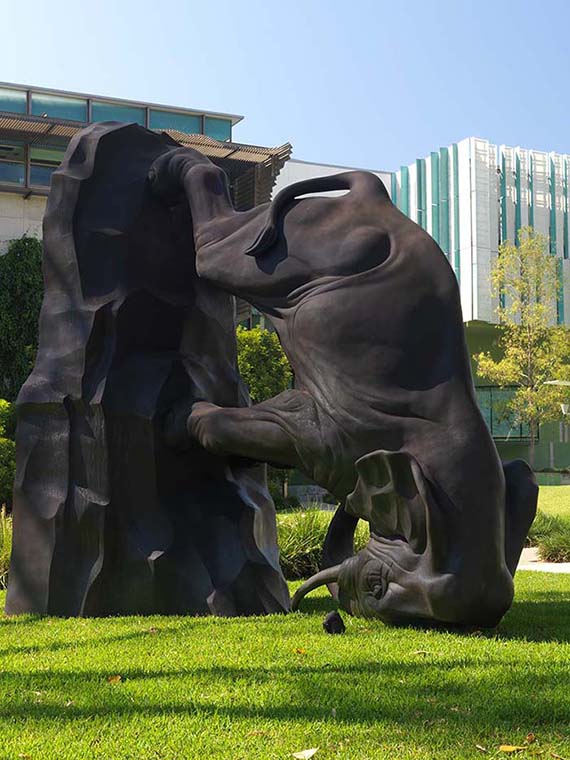We acknowledge the Traditional Owners of the land on which the Queensland Art Gallery | Gallery of Modern Art stands and recognise the creative contribution First Australians make to the art and culture of this country.

Michael Parekowhai / New Zealand b.1968 / The World Turns 2011-12 / Bronze / Commissioned 2011 to mark the fifth anniversary of the opening of the Gallery of Modern Art in 2006 and twenty years of The Asia Pacific Triennial of Contemporary Art. This project has received financial assistance from the Queensland Government through art+place Queensland Public Art Fund, and from the Queensland Art Gallery Foundation / Collection: Queensland Art Gallery | Gallery of Modern Art / © Michael Parekowhai
Michael ParekowhaiThe World Turns 2011–2012
On Display: GOMA
In The World Turns, Michael Parekowhai casts a small native water rat, the kuril, in the role of hero. Along with the traditional Aboriginal custodians, the kuril is one of the caretakers of the land upon which the Gallery and this sculpture stand. The kuril is intrinsically linked to the mangroves that weave around the Kurilpa Point shoreline, which feed it and provide it with shelter, and that these trees, with their strong tentacle-like roots, are the source of nourishment for a diverse ecology.
Here, the kuril is planted firmly on the ground, going about its business, even though it has shifted the world — represented by a large, upturned elephant — from its axis. The chair is an invitation to sit and contemplate this remarkable feat.
The World Turns reminds us that history is often recorded to highlight specific moments, but, as the world turns, there are many other stories — and these are central to our understanding of history.
Michael Parekowhai is one of New Zealand’s most important contemporary artists, showing regularly in New Zealand and internationally in major exhibitions including the Asia Pacific Triennial of Contemporary Art (APT) in 1999 and 2006.
Parekowhai is known for his witty, larger-than-life sculptures, photographs and installations. Parekowhai was born in Porirua in 1968, of European (pākehā) and Māori (Ngāti Whakarongo) descent.
In 1990, he completed a Bachelor of Fine Arts at the University of Auckland’s Elam School of Fine Arts, and received a teaching diploma from the Auckland College of Education. He returned to Elam and in 2000 obtained a Master of Fine Arts.
His public artwork The World Turns 2011–12, a lifesized bronze sculpture of an elephant and native Australian kuril (water rat) is located near the riverfront at GOMA.
Discussion Questions
1. Do you think the elephant in The World Turns is afraid of the kuril?
2. Have you ever heard of elephants or other animals being used as characters in fables or traditional stories? Can you list five examples?
Activities
Research your local area, or walk in your neighbourhood to identify some animals that are specific to your location. Draw a design for a large-size sculpture involving two animals to create a visual story about identity or place. Write a short story to explain your sculpture.